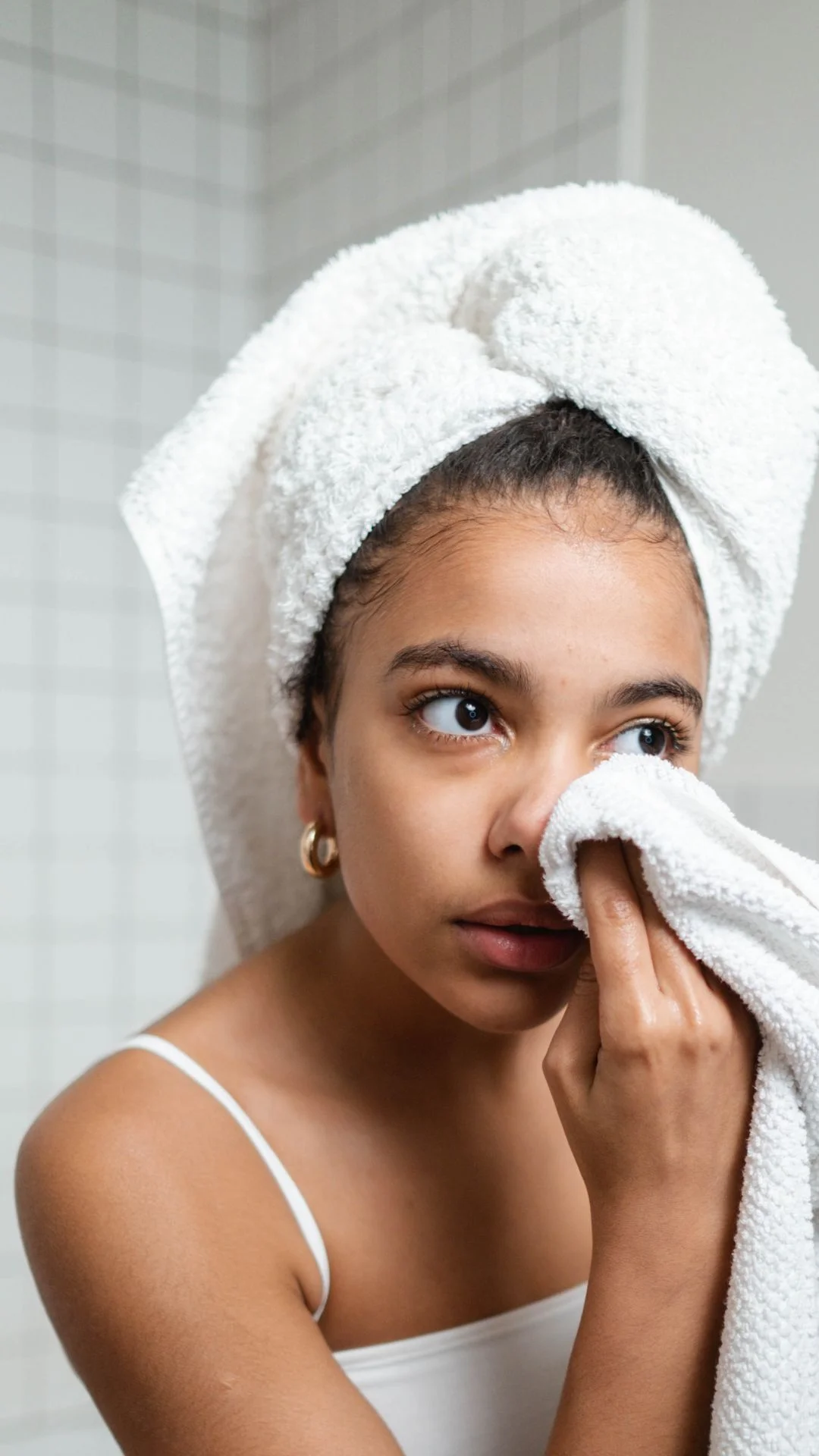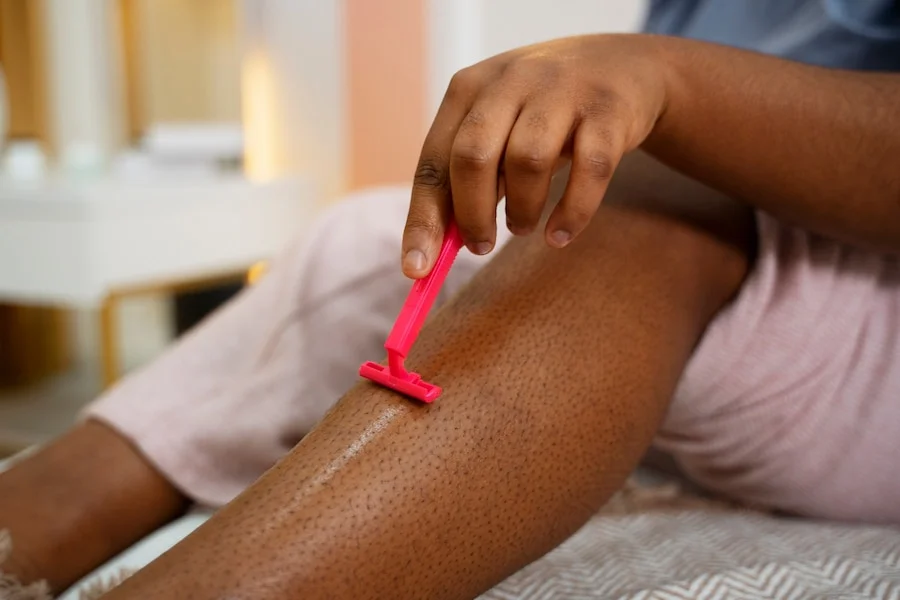Darker skin tones are often adorned with a unique richness and vibrancy.
However, concerns like hyperpigmentation, acne scars, and uneven texture can sometimes cast a shadow on that radiance.
Nowadays, chemical peels for dark skin, once surrounded by misconceptions about potential harm, are gaining recognition as an effective method for revealing a smoother, more even complexion.
A study led by Boston Medical Center found that chemical peels are safe for darker skin when done correctly.
Published in the Journal of the American Academy of Dermatology, it showed less than 4% experienced side effects, lower than previous studies with all skin types.
This goes to show that chemical peels can be incredibly beneficial for darker skin tones.
The key lies in understanding how peels work, choosing the right type for your skin, and following proper pre- and post-care steps.
So, buckle up, skincare enthusiasts, because we’re diving deep into the world of chemical peels for dark skin.
We’ll explore the science behind the magic, unveil the different peel types, and equip you with the knowledge to make informed decisions about your skin’s journey.
Table of Contents
ToggleWhat is a Chemical Peel?
Think of a chemical peel as a controlled resurfacing treatment.
A specially formulated acid solution is applied to the skin, gently dissolving dead skin cells and stimulating the production of new, healthier ones.
This process results in a brighter, smoother complexion, with improved texture and reduced signs of aging or sun damage.
Melanin-rich skin reacts differently to heat and chemical formulations compared to lighter skin.
Deep peels, which penetrate deeper into the skin, can generate heat that damages melanocytes in darker skin tones.
This can lead to two potential risks:
- Hypopigmentation: Loss of pigment, resulting in lighter patches on the skin.
- Post-inflammatory hyperpigmentation (PIH): Increased melanin production in response to inflammation, leading to dark marks and unevenness.
Therefore, choosing the right peel is paramount.
Additionally, a skincare professional or medical aesthetician experienced in treating darker skin tones is essential for navigating this process safely and effectively.
How Do Chemical Peels Work?
Chemical peels work by targeting different layers of the skin.
Superficial peels only affect the outermost layer (epidermis), while medium-depth peels reach the middle layer (dermis).
Deep peels are the most intensive, penetrating deep into the dermis.
The deeper the peel, the more dramatic the results, but also the higher the risk of side effects.
For darker skin tones, superficial peels are generally the safest and most effective option.
These gentler peels deliver noticeable improvements without the increased risk of hyperpigmentation or scarring associated with deeper peels
Why Would You Need a Chemical Peel?
Chemical peels offer a multitude of benefits for darker skin tones, including:
- Reducing hyperpigmentation: Age spots, sun damage, and acne scars can all be addressed by chemical peels, revealing a more even and radiant complexion.
- Improving skin texture: Peels can smooth out rough, uneven skin, leaving it feeling softer and more refined.
- Minimizing acne and acne scars: Chemical peels can help unclog pores, reduce inflammation, and fade acne scars, leading to clearer, smoother skin.
- Diminishing fine lines and wrinkles: By stimulating collagen production, peels can help reduce the appearance of fine lines and wrinkles, leaving skin looking younger and more refreshed.
- Overall skin rejuvenation: Chemical peels can revitalize dull, tired skin, giving it a healthy and youthful glow.
Types of Chemical Peels for Dark Skin
Understanding the various types of chemical agents is crucial for knowing how they work and their applications.
Most peels are based on alpha-hydroxy (AHA) or beta-hydroxyl (BHA) acids, either individually or in combination.
Lactic Acid (AHA):
Derived from soured milk, lactic acid is gentle, suitable for sensitive skin, and has been shown to be a safe and effective peeling agent for addressing skin concerns in individuals with dark skin.
It acts as a natural humectant, removing dullness while retaining moisture, resulting in smooth, plump skin.
Ideal for mild skin aging, early wrinkles, hyperpigmentation, refining skin texture, and rosacea.
Mandelic Acid (AHA):
Derived from bitter almonds, mandelic acid offers gentle surface action and has antibacterial and anti-inflammatory properties. Recommended for oily, congested skin, mild to moderate acne, and superficial hyperpigmentation.
Mandelic acid is suitable for all skin tones and offers unique benefits for dark skin due to its non-irritating properties.
Dark skin is more prone to hyperpigmentation because of higher melanin levels, making gentler treatment necessary.
Mandelic acid’s larger molecular structure slows absorption, reducing the risk of irritation and inflammation, unlike glycolic acid, which may be too harsh for sensitive skin.
Salicylic Acid (BHA):
Effective for oily, congested skin, salicylic acid is a mild anti-inflammatory peel that deeply cleanses pores, removes debris, and regulates oil production.
It’s beneficial for deep cleansing before other peels and reducing pore size, but caution is advised for those allergic to aspirin.
Salicylic acid, a type of beta-hydroxy acid commonly used for acne treatment, has also been explored for addressing pigmentary disorders such as melasma.
Ethanol solutions containing salicylic acid have shown to be effective peeling agents for various conditions in individuals with dark skin, including acne, melasma, and post-inflammatory hyperpigmentation (PIH).
Salicylic acid works differently from glycolic acid peels in reducing pigmentation, as it possesses anti-inflammatory properties that help decrease the risk of PIH commonly associated with peeling agents.
Glycolic Acid (AHA):
Derived from sugar cane, glycolic acid is a powerful solution for various skin issues, including aging, loose skin, wrinkles, hyperpigmentation, sun damage, acne, and associated scarring.
One of the best things about glycolic acid is that it’s really good at fading dark spots, age spots, and melasma. These spots mostly affect the top layer of your skin.
When you use glycolic acid, it helps get rid of the darkest skin cells, revealing fresher, more even skin underneath.
Precautions for dark skin
A major concern for black skin during skin treatments, including peels, is the risk of developing Post Inflammatory Hyperpigmentation.
Instead of resolving hyperpigmentation, the treatment may exacerbate the issue, resulting in more dark marks and scarring.
Therefore, it is important to ensure your skin is properly prepped and primed in the weeks leading up to the peel.
For Caucasian skin, the priming period usually spans 2 to 4 weeks before the peel, but for dark skin, it may require about 4 to 8 weeks to repair your skin’s acid mantle and enhance the peel’s effectiveness.
To ensure a safe and successful peel experience, follow these precautions:
- Consult a medical aesthetician or your cosmetic treatment provider. A qualified professional with experience treating dark skin can assess your needs, recommend the safest and most effective peel type, and guide you through the entire process.
- Before proceeding with a full chemical peel, always insist on a patch test to ensure your skin tolerates the chosen solution.
- 2% to 5% glycolic acid products during this period can help reduce dyschromia and post-peel hyperpigmentation.
- Since a chemical peel deeply exfoliates the skin, avoid exfoliating 7- 10 days before your appointment. Also, be cautious of skincare products with exfoliating ingredients (retinol, glycolic acid, salicylic acid), as they can harm your skin if used before your treatment.
- To minimize dirt and impurities on your skin, refrain from wearing makeup a few days before your peel. Let your skin breathe and detoxify before your appointment.
- Chemical peels work best on undamaged skin, so try to minimize sun exposure before your treatment. If you must be outside, wear protective clothing and apply sunscreen with at least SPF 30.
- Ensure your skin is well-hydrated on the day of your chemical peel. Stop using drying skincare products a few days before your appointment and remember to drink plenty of water to keep your skin hydrated from within.
Consultation at Dr. Lian Beauty
During your consultation at our medical aesthetic clinic, we customize the pre-peel regimen for optimal results.
We also discuss how to tailor the chemical peel to your specific skin tone during the consultation.
For instance, some peels meant to stay on for 5 minutes may need to be removed from darker skin a little bit earlier.
Understand that results may not be immediate and multiple sessions might be needed depending on your skin concerns.
While chemical peels for dark skin are typically safe and effective, adhering to your provider’s post-treatment instructions is crucial.
Here are some general guidelines for recovery after a chemical peel:
Chemical Peel Aftercare
- Avoid sun exposure for at least 2 weeks following your treatment. If you must go outside, wear protective clothing and sunscreen with an SPF of 30 or higher.
- Refrain from sweating or engaging in strenuous exercise for at least 24 hours post-treatment.
- Resist the urge to pick or scratch at any flaking or peeling skin to prevent scarring or infection.
- Follow your provider’s guidance on cleansing and moisturizing your skin after treatment.
- Once the initial healing process is complete, you should notice a visible enhancement in the texture and tone of your skin. It should appear smoother, brighter, and more youthful.
Remember:
Chemical peels are a powerful tool for achieving radiant, healthy skin, but they are not a one-size-fits-all solution.
If you have dark skin and are considering a chemical peel, prioritize safety and consult a qualified professional experienced in treating your skin type.
With the right approach and guidance, you can achieve your desired results while minimizing potential risks.
Additional tips:
- Consider incorporating skin-brightening ingredients like vitamin C, niacinamide, or kojic acid into your skincare routine to further enhance the results of your peel and prevent hyperpigmentation. (Take a look: B.E Beautiful Energy Skincare line)
- Be patient and consistent with your skincare routine, both before and after the peel, for optimal results.
- Don’t hesitate to ask your medical aesthetician or provider any questions or concerns you may have. Their expertise is invaluable in ensuring a safe and successful experience.

Dr. Lian Peter, MD, MPH, CCFP, is a Family physician with a passion for aesthetics. In her aesthetic clinic, she provides a wide range of minimally invasive and non-invasive procedures, constantly honing her skills to deliver exceptional care and help patients attain their desired appearance.






